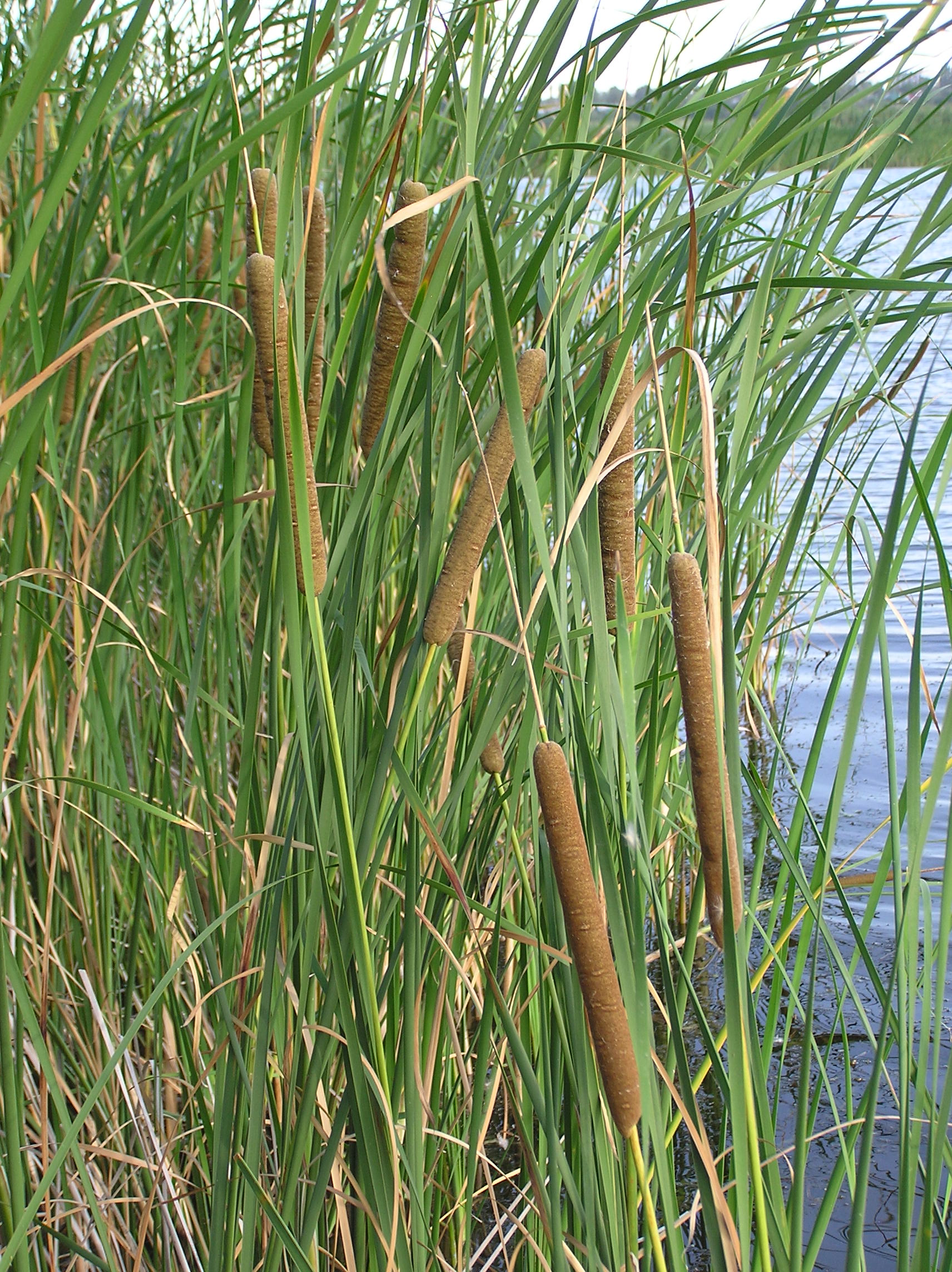Typha angustifolia on:
[Wikipedia]
[Google]
[Amazon]
''Typha angustifolia'' L. (also lesser bulrush, narrowleaf cattail or lesser reedmace) is a
 It has been proposed that the species was introduced from Europe to North America. In North America, it is also thought to have been introduced from coastal to inland locations.
The geographic range of ''Typha angustifolia'' overlaps with the very similar species '' Typha latifolia'' (broadleaf or common cattail). ''T. angustifolia'' can be distinguished from ''T. latifolia'' by its narrower leaves and by a clear separation of two different regions (staminate flowers above and pistilate flowers below) on the flowering heads. The species hybridize as ''Typha x glauca'' (''Typha angustifolia x T. latifolia'') (white cattail); ''Typha x glauca'' is not a distinct species, but is rather a sterile
It has been proposed that the species was introduced from Europe to North America. In North America, it is also thought to have been introduced from coastal to inland locations.
The geographic range of ''Typha angustifolia'' overlaps with the very similar species '' Typha latifolia'' (broadleaf or common cattail). ''T. angustifolia'' can be distinguished from ''T. latifolia'' by its narrower leaves and by a clear separation of two different regions (staminate flowers above and pistilate flowers below) on the flowering heads. The species hybridize as ''Typha x glauca'' (''Typha angustifolia x T. latifolia'') (white cattail); ''Typha x glauca'' is not a distinct species, but is rather a sterile
photo
/sup>
''Typha angustifolia''
Photos, drawings, description from Nature Manitoba {{Taxonbar, from=Q146572 angustifolia Flora of Europe Plants described in 1753 Taxa named by Carl Linnaeus Flora of Canada Flora of Asia Root vegetables Stem vegetables
perennial
A perennial plant or simply perennial is a plant that lives more than two years. The term ('' per-'' + '' -ennial'', "through the years") is often used to differentiate a plant from shorter-lived annuals and biennials. The term is also widel ...
herbaceous
Herbaceous plants are vascular plants that have no persistent woody stems above ground. This broad category of plants includes many perennials, and nearly all annuals and biennials.
Definitions of "herb" and "herbaceous"
The fourth edition o ...
plant of genus
Genus ( plural genera ) is a taxonomic rank used in the biological classification of living and fossil organisms as well as viruses. In the hierarchy of biological classification, genus comes above species and below family. In binomial nom ...
''Typha
''Typha'' is a genus of about 30 species of monocotyledonous flowering plants in the family Typhaceae. These plants have a variety of common names, in British English as bulrush or reedmace, in American English as reed, cattail, or punks, in ...
''. This cattail is an "obligate wetland" species that is commonly found in the northern hemisphere in brackish locations.
Description
The plant's leaves are flat, very narrow (¼"–½" wide), and 3'–6' tall when mature; 12–16 leaves arise from each vegetative shoot. At maturity, they have distinctive stalks that are about as tall as the leaves; the stalks are topped with brown, fluffy, sausage-shaped flowering heads. The plants have sturdy,rhizomatous
In botany and dendrology, a rhizome (; , ) is a modified subterranean plant stem that sends out roots and shoots from its nodes. Rhizomes are also called creeping rootstalks or just rootstalks. Rhizomes develop from axillary buds and grow ho ...
roots that can extend 27" and are typically ¾"–1½" in diameter.
Distribution
 It has been proposed that the species was introduced from Europe to North America. In North America, it is also thought to have been introduced from coastal to inland locations.
The geographic range of ''Typha angustifolia'' overlaps with the very similar species '' Typha latifolia'' (broadleaf or common cattail). ''T. angustifolia'' can be distinguished from ''T. latifolia'' by its narrower leaves and by a clear separation of two different regions (staminate flowers above and pistilate flowers below) on the flowering heads. The species hybridize as ''Typha x glauca'' (''Typha angustifolia x T. latifolia'') (white cattail); ''Typha x glauca'' is not a distinct species, but is rather a sterile
It has been proposed that the species was introduced from Europe to North America. In North America, it is also thought to have been introduced from coastal to inland locations.
The geographic range of ''Typha angustifolia'' overlaps with the very similar species '' Typha latifolia'' (broadleaf or common cattail). ''T. angustifolia'' can be distinguished from ''T. latifolia'' by its narrower leaves and by a clear separation of two different regions (staminate flowers above and pistilate flowers below) on the flowering heads. The species hybridize as ''Typha x glauca'' (''Typha angustifolia x T. latifolia'') (white cattail); ''Typha x glauca'' is not a distinct species, but is rather a sterile F1 hybrid
An F1 hybrid (also known as filial 1 hybrid) is the first filial generation of offspring of distinctly different parental types. F1 hybrids are used in genetics, and in selective breeding, where the term F1 crossbreed may be used. The term is some ...
. Broadleaf cattail is usually found in shallower water than narrowleaf cattail.
Culinary use
Several parts of the plant are edible, including during various seasons the dormant sprouts on roots and bases of leaves, the inner core of the stalk, green bloom spikes, ripe pollen, and starchy roots. It can be prepared in the same way as ''Typha latifolia''. The edible stem is called ''bồn bồn'' in Vietnam./sup>
References
External links
''Typha angustifolia''
Photos, drawings, description from Nature Manitoba {{Taxonbar, from=Q146572 angustifolia Flora of Europe Plants described in 1753 Taxa named by Carl Linnaeus Flora of Canada Flora of Asia Root vegetables Stem vegetables